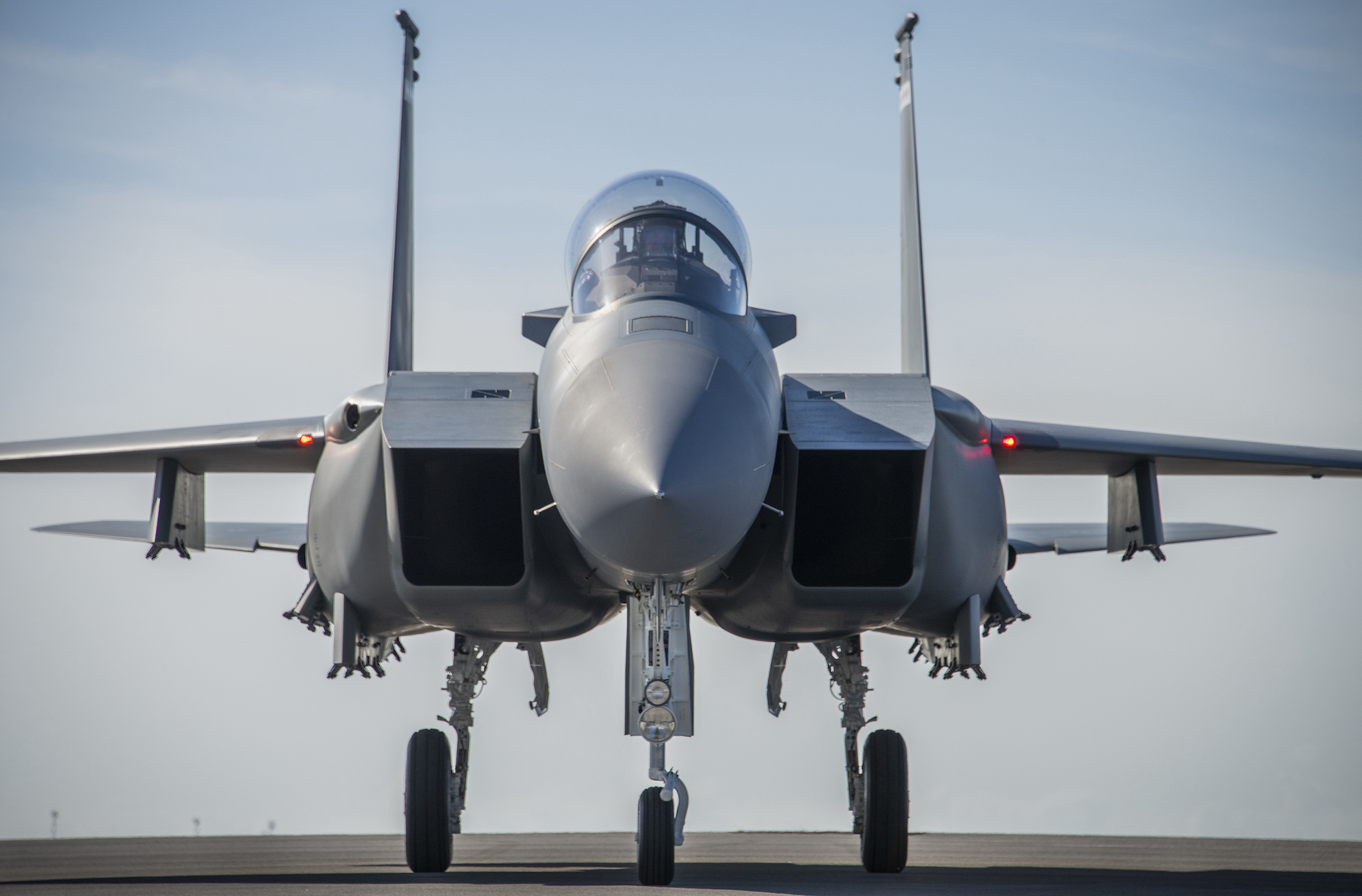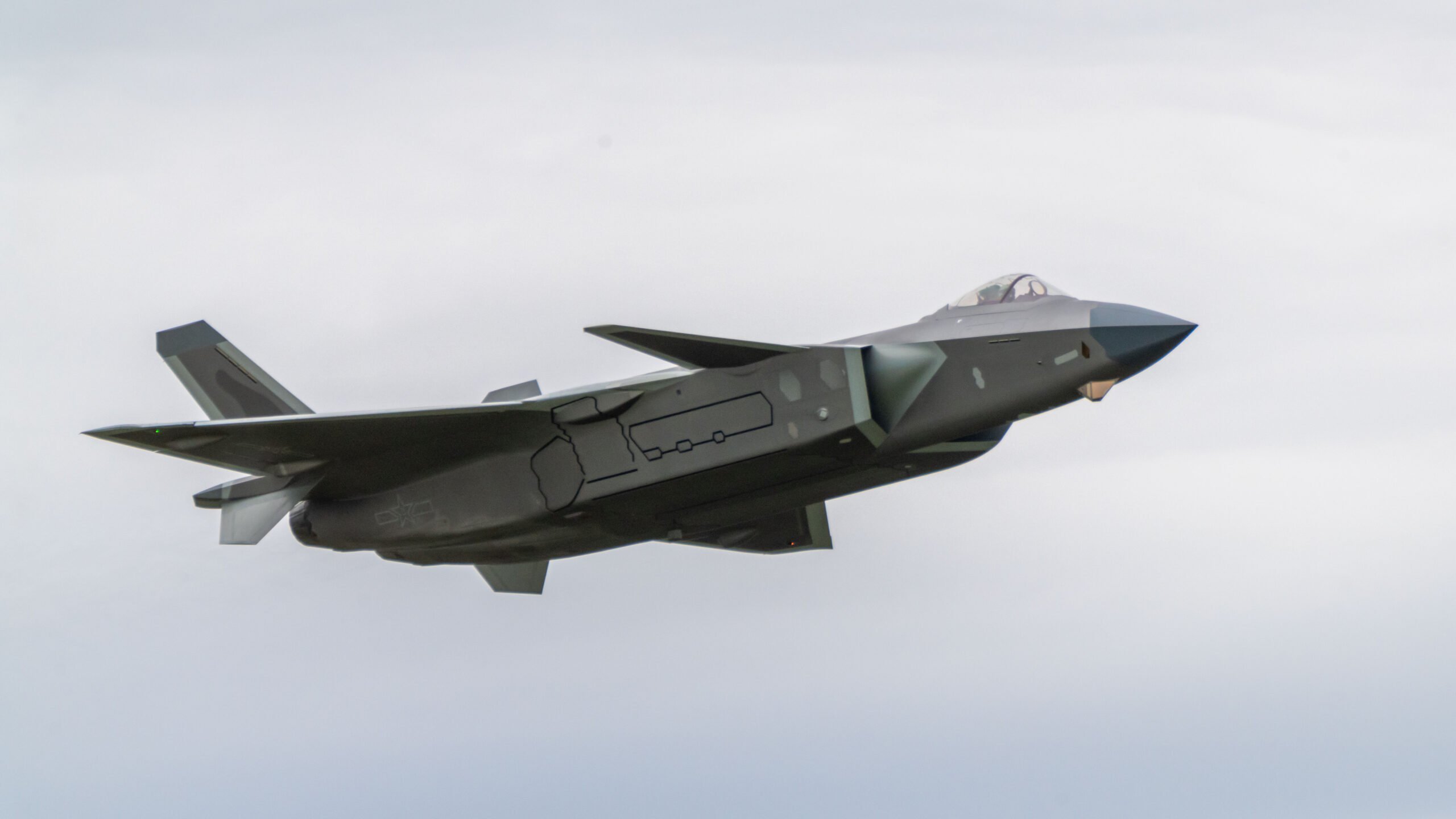Fighter Jet Air Force - An F-16 Fighting Falcon (left), P-51D Mustang (below), F-86 Saber (above) and F-22 Raptor (right) fly in formation representing four American fighter jets.
Fighter jets are fixed-wing military aircraft designed primarily for air-to-air combat. In a military conflict, the task of fighter aircraft is to establish air superiority on the battlefield. Control of the airspace over the battlefield enables bombers and attack aircraft to conduct tactical and strategic bombing of enemy targets.
Fighter Jet Air Force

The main performance characteristics of a fighter aircraft are not only its firepower, but also its high speed and maneuverability compared to target aircraft. The success or failure of a fighter's efforts to achieve air superiority depends on many factors, including the skill of pilots, the tactical soundness of fighter deployment, and the number and performance of fighters.
Us Confirms Fighter Jet Flew Close To Iranian Jetliner Above Syria, Leading To Passenger Injuries
Many modern fighter aircraft also have secondary capabilities such as ground attack, and some types, such as fighter-bombers, were designed from the outset for a dual role. Other fighter designs are more specialized while still serving a key air superiority role, including the interceptor, heavy fighter and night fighter.
A giv type can be designed for specific combat conditions and in some cases for additional roles such as air-ground combat. Historically, the British Royal Flying Corps and Royal Air Force referred to them as "reconnaissance" aircraft until the early 1920s, while the US military called them "follow-up" aircraft until the late 1940s. In the 1920s the UK called them fighters
Of these, the fighter-bomber, reconnaissance fighter and strike fighter classes are dual-role and, along with other battlefield roles, have fighter-specific attributes. Some fighter designs may be developed as variants that perform other roles such as ground attack or unarmed reconnaissance. This may be due to political or national security reasons, advertising purposes or other reasons.
The Sopwith Camel and other "battle scouts" of World War I carried out large-scale ground raids. In World War II, the USAAF and RAF generally favored fighters over dedicated light bombers or dive bombers, and types such as the Republic P-47 Thunderbolt and Hawker Hurricane were no longer competitive as air combat fighters, being relegated to ground attack. A number of aircraft, such as the F-111 and F-117, were given the fighter designation, although they lacked combat capability for political or other reasons. The F-111B variant was originally used by the US Navy but was scrapped. This blur follows the use of warplanes from their earliest days for "attack" or "strike" operations against ground targets by hitting or dropping small bombs and incendiary devices. Versatile, multi-role fighter-bombers such as the McDonnell Douglas F/A-18 Hornet are less isolated than specialized aircraft types.
Taiwan Showcases Most Advanced Fighter Jet After China Drills
Some specialized fighters such as the American Grumman F-14 Tomcat, the McDonnell Douglas F-15 Eagle, the Lockheed Martin F-22 Raptor and the Russian Sukhoi Su-27 are used as all-weather interceptors and air. Fighters for excellence. They usually develop air-to-ground roles late in their careers. An interceptor is usually an aircraft designed to target (or intercept) bombers and therefore often trades maneuverability for rate of climb.
As part of military nomenclature, different types of aircraft are given a letter to indicate their use, as well as a number to indicate a specific aircraft. The letters used to denote fighter aircraft are different in different countries. In the Hungarian-speaking world, "F" is often used to denote fighter aircraft (e.g. Lockheed Martin F-35 Lightning II or Supermarine Spitfire F.22), although "P" was previously used for pursuit in the United States (e.g. Curtiss P-40 Warhawk, Translation of Frch "C" (Dewoitine D.520 C.1) for Chasseur, Russian "I" used for Istrebitel or exterminator (Polikarpov I-16).
With the proliferation of fighter types, the air superiority fighter became the pinnacle of speed, maneuverability and air-to-air weapon systems – able to hold its own against all other fighters and assert its dominance in the skies. battlefield
![]()
An interceptor is a fighter aircraft specifically designed to intercept and target enemy aircraft. There are two general categories of interceptors: relatively light point defense aircraft built for quick response, high performance and short range, and heavier aircraft with more complex avionics designed for night or all-weather flight. They work long term. By 1929, combatants of World War I were already known as interceptors.
The U.s. Air Force May Have Just Built Its Last Fighter Jet
Equipment required for day flying is not suitable at night or in poor visibility. During World War I the night fighter was developed with additional equipment to assist the pilot in direct flight, navigation and target acquisition. From modified versions of the Royal Aircraft Factory B.E.2c in 1915, the night fighter developed into an excellent all-weather fighter.
The strategic fighter is a fast, heavily armed and long-range type that serves as an escort fighter to protect bombers, perform its own missions as an application fighter and patrol at considerable distances from its base.
Bombers are vulnerable because of their low speed, large size and poor maneuverability. The escort fighter was developed during World War II to act as a defensive shield between bombers and enemy attackers. The primary requirement was long range, giving the role to several heavy hunters. However, these proved cumbersome and fragile, so as the war progressed, techniques such as drop tanks were developed to extend the range of more nimble conventional fighters.
A penetration fighter is also typically suited for ground attack, so it can defend itself during an attack.
What's The Point Of Scrambling Raf Fighter Jets?
This section requires additional references for review. Please help improve this article by adding links to reliable sources. Unsourced material may be objected to and removed. (October 2021) (Learn how and where to remove this template message)
Since World War I, achieving and maintaining air superiority has been essential to victory in conventional warfare.
Fighters were further developed during World War I to be able to collect enemy aircraft and controllers through battlefield reconnaissance. Early fighters were very small and lightly armed by later standards, and most were biplanes fitted with cloth-covered wooden frames, with a maximum airspeed of about 100 mph (160 km/h). As airspace control over their militaries became more important, all major powers developed fighter jets to support their military operations. Between the wars, wood was partially or completely replaced by metal tubes, and eventually aluminum expanded shell structures (monocoque) began to dominate.

In World War II, most fighters were all-metal monoplanes armed with machine gun or cannon mounts, and some reached speeds of 400 mph (640 km/h). Up to this point, most fighters were single-engined, but several twin-engine fighters were built; However, they excelled as single-engine fighters and were relegated to other roles such as night fighters equipped with primitive radar sets.
The Air Force Secretly Built Its Next Fighter Jet: Here's What It Means For Defense Stocks
By the end of the war, turbojet engines had replaced piston engines, further increasing aircraft speeds. Since the mass of a turbojet engine was smaller than that of a piston engine, two engines were no longer a disadvantage and one or two were used depending on the needs. However, this required the development of ejection seats to allow the pilot to escape, and G-suits to counter the high forces on the pilot during maneuvers.
Day fighters were equipped with radar in the 1950s, as the increasing array of air-to-air weapons meant that pilots could no longer see far enough ahead to prepare for opposition. After that, the capabilities of radar increased tremendously and it is now the primary method of target acquisition.
The wings were thinned and swept back to reduce transonic drag, which required new manufacturing methods to achieve sufficient power. Skins are no longer riveted to the structure from sheet metal, but milled from large alloy plates. The sound barrier was broken, and after a few false starts, the necessary control changes quickly brought the speed up to Mach 2, beyond which the plane could not maneuver enough to avoid attack.
Air-to-air missiles largely replaced guns and missiles in the early 1960s, but both were considered useless at the speeds achieved, however, the Vietnam War showed that guns still had a role, and most combatants built since then have guns. (usually 20 to 30 mm (0.79 to 1.18 in) in calibre) with rockets. Most modern fighter jets can carry at least one pair of air-to-air missiles.
Bolivia Air Force Is Looking For Fighter Jets
In the 1970s, turbofans replaced turbojets, improving fuel economy because they could replace the last piston-engined support aircraft with jets, allowing for the majority of fighter jets. Honeycomb structures began to replace mill structures and the first composite parts began to appear on low-pressure units.
United States Air Force F-22 Raptor and F-35 Lightning II fighter jets over Florida's Emerald Coast
With the continuous development of computers, security systems have become more and more effective. To counter this

Air force fighter jet, new jet fighter of philippine air force, us air force newest fighter jet, air force newest jet fighter, us air force fighter jet, latest air force fighter jet, air force one fighter jet, cambodian air force jet fighter, air force secret new fighter jet, best fighter jet in indian air force, us air force best jet fighter, fastest air force fighter jet
0 Comments